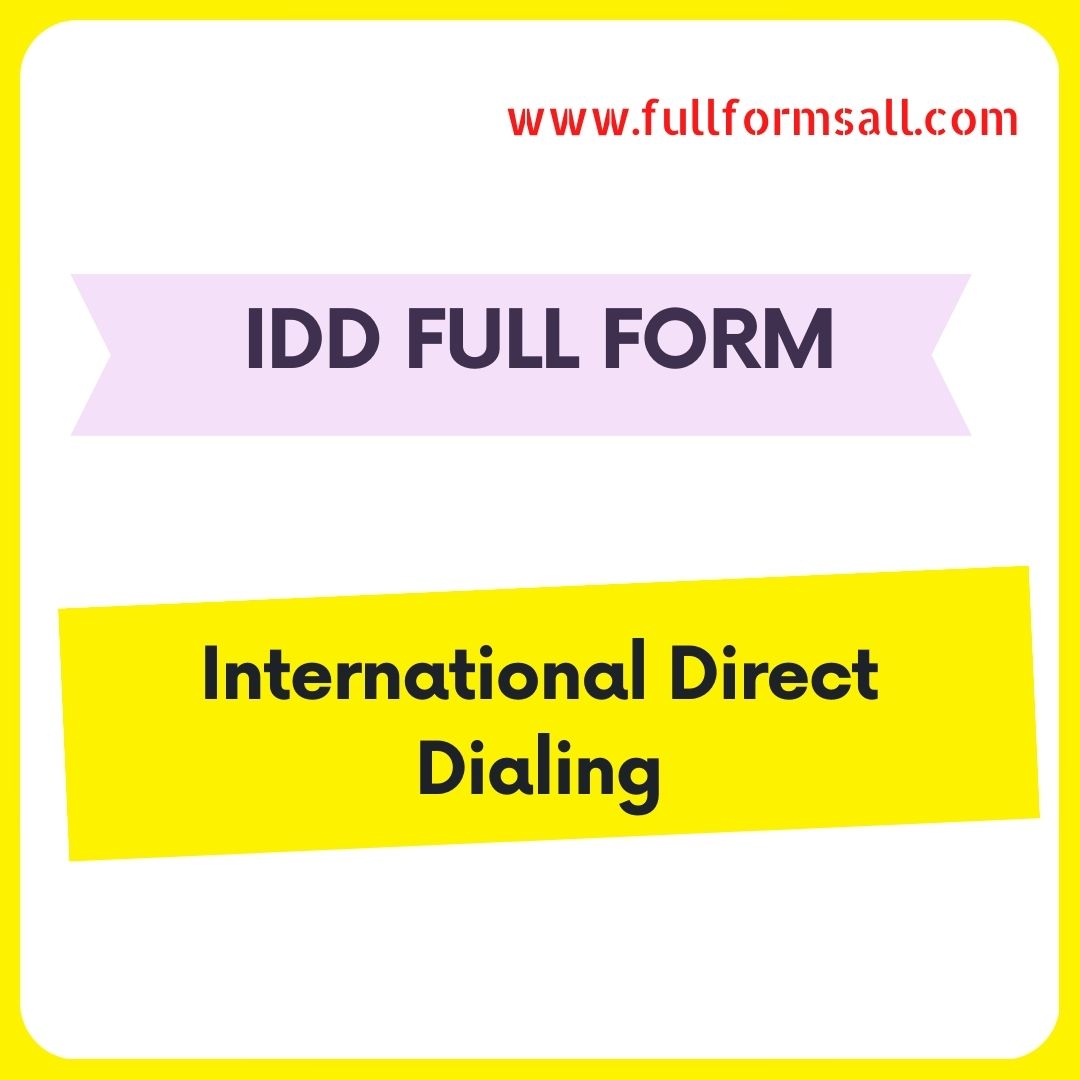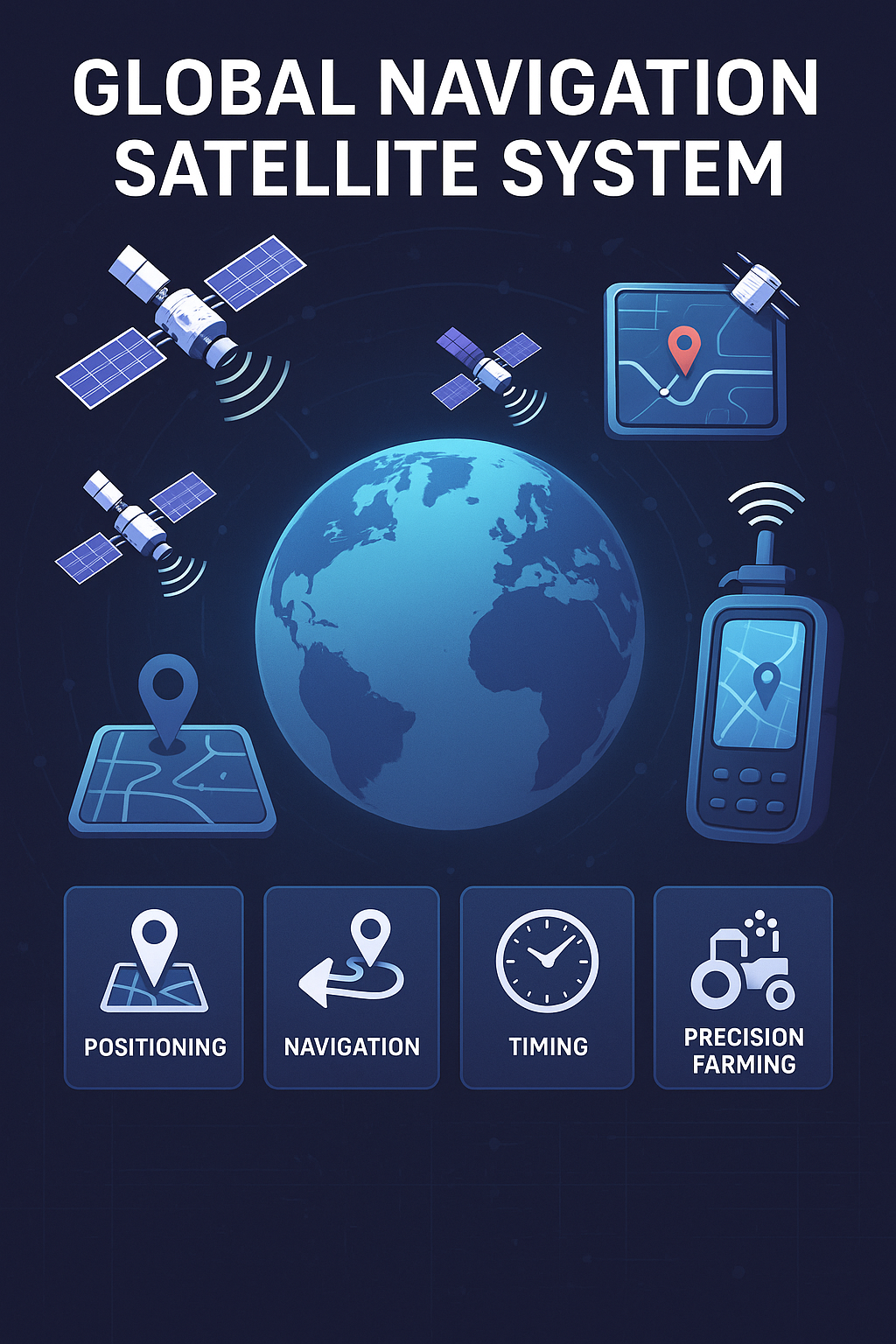In this article you get to know about IDD full from and other different abbreviations of IDD in various fields. IDD full form refers to International Direct Dialing

International Direct Dialing is a telecommunication service that allows users to make direct long-distance calls to other countries without the need for operator assistance or manual routing. It enables individuals to dial international phone numbers directly from their telephone or mobile device.
To make an international call using IDD you need to follow these steps:
Dial the international access code: This code varies from country to country but is usually a combination of digits, such as “00” or “+”. It is used to indicate that you are making an international call.
Enter the country code: Each country has a unique country code that is used to identify a specific nation. For example, the country code for the United States is “1,” while the country code for the United Kingdom is “44.”
Include the area code (if applicable): Some countries have area or city codes that need to be dialed before the local phone number. These codes help route the call to the correct region within the country. Omitting the area code may result in the call being misdirected or not going through.
Dial the local phone number: Finally, enter the local phone number of the person or business you are trying to reach. The number of digits in the local phone number varies depending on the country’s telephone numbering plan.
Example of how to dial an international number using IDD:
If you were in the United States (country code 1) and wanted to call a phone number in the United Kingdom (country code 44) with the local number 1234567890, you would dial: 011 44 1234567890
It’s important to note that IDD rates and charges may apply when making international calls, and these can vary depending on your service provider. It’s advisable to check with your telecommunications provider for specific details about international calling rates and any additional charges that may apply. some mobile networks and Voice over IP services may have their own dialing conventions or alternative methods for making international calls. Therefore, it’s recommended to consult your service provider or refer to their documentation for accurate instructions on how to place international calls.
Country Codes: Every country has a unique country code assigned to it, which is used to identify the destination country of an international call. These codes are typically one to three digits long. For example, the country code for Canada is “1,” while the country code for Australia is “61.”
Exit Codes: In some countries, instead of using “00” or “+” as an international access code, an exit code is used. An exit code is a specific sequence of digits that indicates the beginning of an international call. Examples of exit codes include “011” in the United States and Canada, “001” in Japan, and “0011” in Australia.
International Call Format: The format for dialing an international number typically follows the sequence: Exit Code + Country Code + Area Code (if applicable) + Local Phone Number. However, the specific order and format can vary between countries. It’s essential to know the correct sequence and the required number of digits for each component.
International Call Charges: Making international calls can incur additional charges beyond regular domestic calls. These charges depend on your service provider and the specific calling plan you have. It’s advisable to check with your provider to understand the costs associated with international dialing, including any applicable rates per minute or discounted calling packages.
Time Zone Considerations: When making international calls, it’s important to be mindful of the time zone difference between your location and the destination country. Calling at an inappropriate time might disrupt the receiver or lead to missed connections. Consider checking the time difference and choosing an appropriate time to make your call.
Mobile and VoIP Services: With the increasing prevalence of mobile networks and Voice over IP (VoIP) services, alternative methods for making international calls have become available. Some service providers offer specialized international calling packages or applications that allow for cheaper or free international calls over an internet connection. These options can be worth exploring if you frequently make international calls.
Emergency Services: It’s important to note that international calls to emergency services, such as 911 or 999, may not work in all countries. Some countries may have different emergency service numbers or may not have a universal emergency number at all. It’s important to research and note down the appropriate emergency service numbers for the country you are visiting or calling.
Quality of Service: The quality of IDD calls can vary depending on the service provider, network, and other factors. In some cases, international calls may be subject to network congestion, signal interference, or other issues that can affect call quality. To ensure the best possible call quality, consider using a reliable service provider and a stable internet connection if making a VoIP call.
Dialing Assistance: If you’re unsure about how to dial an international number, most service providers offer dialing assistance or automated voice prompts that can guide you through the process. Some providers may also have customer support representatives available to help you with international calls.
Language Barriers: When making international calls, language barriers may also pose a challenge, especially if you’re trying to communicate with someone who doesn’t speak your language. Consider using translation apps or services to help overcome language barriers.
IDD Fraud: Just like with any other telecommunication service, IDD can be susceptible to fraudulent activities. Fraudsters may attempt to impersonate a legitimate service provider or trick individuals into making expensive international calls. It’s essential to be vigilant and take precautions, such as verifying the authenticity of any promotional offers or calls from unknown numbers.
Roaming Charges: If you’re making an international call while traveling abroad, you may incur additional charges known as roaming charges. These charges apply when using a foreign network to make or receive calls, send text messages, or use data services. It’s advisable to check with your service provider before traveling and consider purchasing a roaming package or using a local SIM card to reduce costs.
Area Codes: Some countries may require the use of area codes when making domestic or international calls. These codes typically identify a specific region within the country and may be one to four digits long. It’s essential to know the correct area code for the location you’re trying to call, as failing to include it could result in a failed connection.
Multiple Providers: In some cases, you may need to use multiple service providers when making international calls. For example, if you’re calling a country with multiple mobile network operators, you may need to know the specific operator of the recipient’s phone number to ensure a successful connection.
Accessibility Services: IDD services are typically designed to be accessible to individuals with disabilities. Some service providers may offer specialized services or equipment, such as text telephone or relay services, to help individuals with hearing or speech impairments make international calls.
Privacy Considerations: When making international calls, it’s important to be mindful of privacy and security considerations. Some countries may have stricter regulations on call monitoring or data retention, which could impact your privacy. It’s important to research the laws and regulations of the countries you’re calling to understand any potential privacy risks.
Call Recording: In some jurisdictions, it may be illegal to record international calls without the consent of all parties involved. It’s important to understand the legal requirements for call recording in the countries you’re calling and to obtain consent if necessary.
IDD can be a convenient and effective way to make international calls, but it’s important to be aware of the potential challenges and considerations that come with it. By understanding the technical requirements, costs, and regulations involved, you can make informed decisions and ensure successful connections when making international calls.
Different abbreviations of IDD in various fields are as follows
| Term | Abbreviation | Category |
| IDD | International Direct Deposit | Banking |
| IDD | Investment Due Diligence | Business |
| IDD | Industry Director Directive | Technology |
| IDD | Instrument Deployment Device | Technology |
| IDD | Insufficient Downward Displacement | Technology |
| IDD | Interior Design Directory | Computing and Networking |
| IDD | Internet Data Distribution | Computing and Networking |
| IDD | Interface Design Description | Computing and Networking |
| IDD | Integration Driven Development | Computing and Networking |
| IDD | Interim Digital Division | Military and Defence |
| IDD | Interictal Dysphoric Disorder | Medical |
| IDD | Insulin Dependent Diabetes | Medical |
| IDD | Iodine Deficiency Disease | Medical |
| IDD | Iodine Deficiency Disorder | Medical |
| IDD | Intellectual Developmental Disability | Medical |
| IDD | Insanely Destructive Devices | General |
| IDD | Institutional Development Department | General |
| IDD | Italian Defense Division | General |
| IDD | Infrastructure Development Department | General |
| IDD | International Development Department | General |
| IDD | International Direct Dialling | General |
| IDD | Insurance Distribution Directive | General |
| IDD | Industrial Development Department | General |
| IDD | Internal Drainage District | General |
| IDD | Intrinsically Disordered Domain | Academic & Science |
| IDD | Indian Diploma In Dairying | Academic & Science |
| IDD | Integrated Dual Degree | Academic & Science |
| IDD | Institute For Drug Development | Academic & Science |
| IDD | Internal Disc Disruption | Academic & Science |
CONCLUSION:
Dear reader in this article you get to know about IDD full from and IDD term used in various other fields, If you have any query regarding this article kindly comment below.
